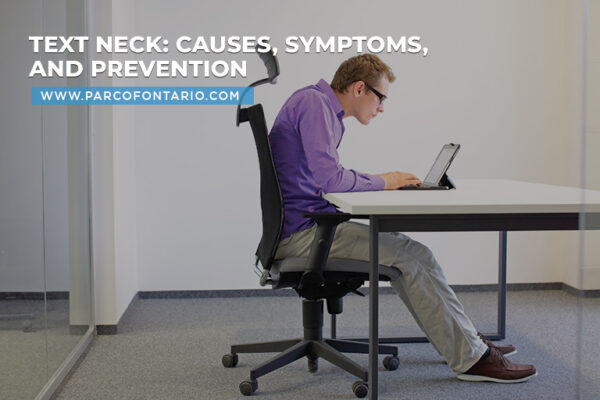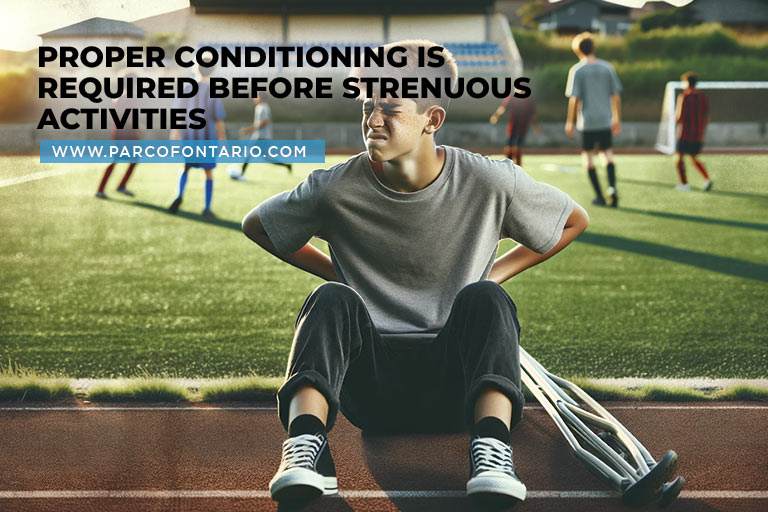
Text Neck: Causes, Symptoms, and Prevention
Many of us spend long hours hunching over our electronic mobile devices and laptops. As we spend more time texting, browsing social media, and reading on our devices, this constant downward gaze…
Read More
Back pain, often considered an ailment of the older population, is increasingly becoming a concern for the younger generation, particularly teenagers. The trend of back pain in adolescents is alarming as it not only affects their physical well-being but also their overall quality of life.
The adolescent years are a critical time for physical and mental development. With the advent of technology and changing lifestyles, teens are now facing health challenges that were once predominantly adult concerns. There are many reasons behind the rising incidence of back pain among teens, and fortunately, there are also preventative measures.
is a multifaceted issue, stemming from various causes ranging from lifestyle habits to psychological stress. Understanding these factors is the first step in addressing this growing problem. Here are some common reasons for teen back pain:
The increasing prevalence of back pain among teens is significantly attributed to poor posture. This issue has escalated with the heightened use of devices like smartphones and laptops, leading to prolonged periods in a hunched position. This posture is not natural for the spine, causing an imbalance in the muscular and skeletal system. The spine endures excessive stress, especially in the lower back and neck areas, resulting in discomfort and chronic pain. Over time, this can lead to more severe spinal conditions.
A sedentary lifestyle, marked by long durations of sitting and limited physical activity, is a growing trend among teenagers, especially with the digitalization of education and entertainment. This lifestyle leads to the weakening of the back muscles and the core, which are essential for supporting the spine. The lack of muscle strength and flexibility increases the vulnerability of the back to pain and injury. Moreover, prolonged sitting can cause spinal discs to compress unevenly, leading to discomfort and potential long-term spine issues.
Adolescence is characterized by rapid growth and development, during which growth spurts are common. These spurts can lead to muscle imbalances and spinal misalignments as the body adjusts to its new dimensions and proportions. The rapid growth of bones, muscles, and tendons can result in strains and discomfort, particularly if the body’s supporting structures are not strengthened proportionately, making it more susceptible to injuries and strains.

Active teenagers, particularly those involved in sports or physical activities, may experience back pain due to overexertion or improper technique. Sports that involve twisting motions, heavy lifting, or repetitive movements can put significant strain on the back, especially if the body is not properly conditioned or if the technique is incorrect. Without adequate strength and flexibility training, the back is prone to injuries such as muscle strains, ligament sprains, or even more severe injuries like herniated discs.
Some teenagers suffer from back pain due to underlying medical conditions like scoliosis (a curvature of the spine), arthritis, or other spinal disorders. These conditions can cause chronic back pain and discomfort and may require specialized medical treatment and management. Early detection and treatment are crucial in these cases to prevent the progression of the condition and to manage pain effectively.
The impact of psychological stress on physical health is often underestimated, particularly in the context of back pain in teenagers. Stress and emotional factors, such as anxiety and depression, can manifest as physical symptoms, with back pain being a common expression. The body’s response to stress often involves muscle tension, particularly in the back and neck, leading to pain and discomfort.
Caption: Ergonomic workstations can promote good posture
Neglecting adolescent back pain can be detrimental in the long run, so prevention at an early age is critical. Here are a few back pain solutions for teens:
Regular physical activity is crucial in preventing back pain among teenagers. Engaging in exercises such as swimming, cycling, and yoga not only strengthens the back muscles but also enhances overall muscular balance and flexibility. These activities support the spine and improve posture, reducing the likelihood of back pain. Exercise increases blood flow to all parts of the body, aiding in the healing and prevention of back-related issues. For adolescents, incorporating varied physical activities into their routine can foster a healthier musculoskeletal system, effectively safeguarding them against the development of chronic back problems.
A balanced diet and sufficient sleep are foundational elements in maintaining spinal health and preventing back pain. Nutrition plays a critical role in bone and muscle development; a diet rich in calcium and vitamin D, for instance, promotes strong bones, reducing the risk of back pain. Adequate hydration and the intake of anti-inflammatory foods can also help maintain spinal health. Similarly, quality sleep is essential for the body’s repair processes, including those of the back muscles and spinal structures.
Ergonomic environments, both for study and leisure, are vital in maintaining good posture and preventing back pain. Ergonomics focuses on designing workspaces and furniture that align with the natural posture of the body. Ergonomic tips for teen back pain include using chairs that provide proper lumbar support, keeping the spine aligned and reducing strain on back muscles. Positioning computer screens at eye level helps in avoiding neck and back strain caused by leaning forward. Additionally, the use of adjustable desks and chairs can accommodate the varying physical needs of adolescents, particularly during growth spurts, ensuring comfort and spinal health.
Regular health checkups and screenings are essential, especially for active teens, to prevent and manage back pain. Early detection through regular medical exams can prevent these issues from escalating into chronic back pain. Health screenings can identify any underlying conditions like scoliosis, which can be addressed promptly. Additionally, these check-ins provide an opportunity for healthcare professionals to offer advice on proper exercise techniques and lifestyle choices that can further protect the back.
Physiotherapy and massage therapy are effective in treating back pain in teenagers. Physiotherapy involves tailored exercises and routines that strengthen back muscles, improve flexibility, and correct posture. It also includes education on proper body mechanics to prevent future injuries. Massage therapy, on the other hand, offers relief through muscle relaxation, improved circulation, and the release of endorphins, which are natural pain relievers. For teens experiencing back pain, these therapeutic approaches can provide significant relief and a path to long-term spinal health.
Teenagers and spine health are two things that may seem incompatible. Back pain in teenagers is a growing concern that needs to be addressed with a combination of awareness, lifestyle changes, and appropriate medical intervention. Encouraging healthy habits, ergonomic environments, and physical activity are crucial steps in preventing and managing back pain among adolescents.
For comprehensive care, physiotherapy in Oshawa, and expert advice on managing back pain, contact the Physiotherapy and Rehabilitation Center of Ontario at the following locations: